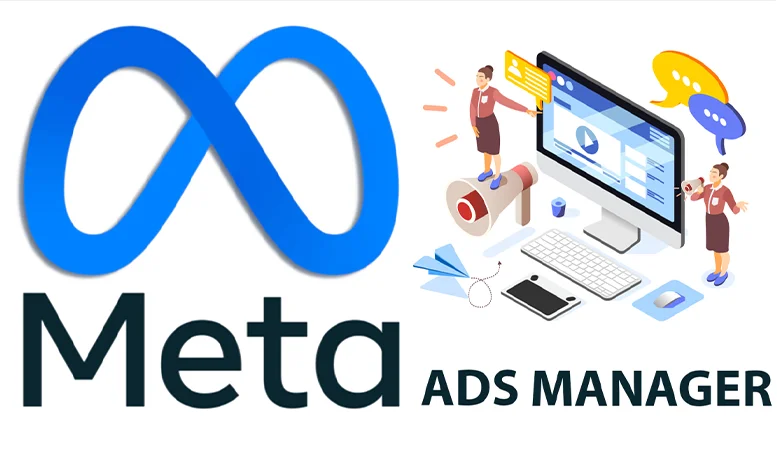
In the middle of digital marketing competitions, developing and implementing effective and result-oriented advertising campaigns is the need of the time. As social media platforms are being utilized more and more for advertising, you can not underestimate their power. Tools such as Meta Business Suite allows ad management and help businesses reach their target audience effectively.
This article will discuss Meta Business Suite, the importance of Ad Manager, and how it contributes to expanding a business’s reach. It will also discuss what happens to a business in the absence of a Meta ads strategy. Lastly, it will explore its features and steps to make these ad strategies successful.
What is Meta Business Suite?
Meta Business Suit (Formerly Facebook Business Suite) is a powerful one-stop tool for managing all advertising and marketing activities on both Facebook and Instagram. It simplifies a business’s management and presence on both social media platforms. Simply put, it is a centralized tool that helps business owners connect with their customers online.
Whether business owners are managing activities on mobile or desktop, Meta Business Suite facilitates them in streamlining their social media activities. These activities include:
- Creating and managing business pages
- Receiving unified notifications and messages
- Scheduling posts and stories
- Accessing engagement insights
- Create automated messages
- Managing and engaging multiple users
- Creating, publishing, and monitoring ad campaigns

Importance of Ad Manager
Ad Manager is one of the most important features of Meta in social media marketing because it has a direct influence on generating revenue and engaging the target audience. When ads strategy is implemented effectively, Ad Manager helps businesses reach the right audience, optimize the budget allocation, and enhance ad performance. It is a base for businesses to optimize their return on investment for advertising as a basic part of the advertising budget.
Without an effective ad strategy, business owners feel difficulty in reaching their potential clients or customers, causing a hurdle in reaching their marketing goals. They miss out on opportunities to increase their brand awareness and visibility and drive more traffic. As a result, it limits their online presence and comes in the way of growth potential.
Key Features of Ad Manager
Now that you are aware of why Ad Manager stands out among other Meta Business Suite Features and how it benefits businesses, let’s explore its features.
1- Ad creation tool
This feature allows business owners to target their audience precisely by creating ads keeping in mind their demographics. These demographics include ages, genders, interests, behaviors, and past activities of the audience with your business. They customize their ad messages that resonate with the audience segment. The ad creation workflow is in 3 steps as follows:
- Campaign level: Selecting an ad objective or overall campaign goal
- Ad set level: Defining the audience you want to reach, choosing ad placement, and determining the budget
- Ad level: Designing ads and choosing different formats
2- Choosing Campaign Objective
Choosing a campaign objective is one of the most important factors in an ad strategy as it is the outcome that a business owner will face. The goal changes over time with the growth of the business. A business owner’s initial goal might be creating awareness about the brand. Later on, he/she might want to focus on encouraging the target audience to purchase the products or services. Following is the list of ad goals Ad Manager offers:
- Awareness
- Traffic
- Engagement
- Leads
- Promotion
- Sales
3- Ad Formats
Once the ad is created, a variety of ad formats appear in the tool, meeting diverse marketing goals. These ad formats are
- Single image
- Video
- Carousal
- Slide shows
- Canvas
While choosing the format, business owners must be careful and recall their campaign goals and vision. If the format does not align with the overall objective, proceeding with the strategy will be useless. Ultimately, the business owner will not get the desired results and it will only cost time, money, and effort.
4- Audience targeting
Audience targeting is the core of Ad Manager, allowing users to focus on specific demographics of their target audience as mentioned in the ad creation tool. This is where you decide who you want to see your ads. You can make most of specific or broad targeting.
| Specific Targeting | Broad Targeting |
|---|---|
|
|
5- Budget optimization
Performance analytical tools provide valuable data about the effectiveness of ad campaigns. It includes analytics about CTR, impressions, engagement, and conversion rates. This helps advertisers enhance campaign performance accordingly. By analyzing KPIs, patterns, and trends effectively, ad campaigns can be refined and better results are generated.
6- Ad Scheduling and Budgeting
Before scheduling a campaign, it is important to view page insights and understand when the target audience is most active on Facebook and Instagram. An ad must be scheduled at a time zone according to the audience. Ad Manager has sophisticated tools to schedule ad campaigns and allocate budget to them.
This feature gives advertisers complete control over how and when their ad campaigns are displayed. They schedule ad campaigns to show to the audience at peak time increasing visibility and improving overall impact. Additionally, flexible budgeting options help business owners distribute their budgets across channels, campaigns, and timeframes.
7- Performance analytical tools
Performance analytical tools provide valuable data about the effectiveness of ad campaigns. It includes analytics about CTR, impressions, engagement, and conversion rates. This helps advertisers enhance campaign performance accordingly. By analyzing KPIs, patterns, and trends effectively, ad campaigns can be refined and better results are generated.

How to make a meta ads strategy successful?
Making a successful Meta Ads strategy is only possible when advertisers focus on careful planning, strong execution, and continuous optimization. First and foremost, it is important to have a complete understanding of your target audience, their preferences, pain points, and behaviors. Indulge in deep research and know about their demographics, online activities, and interests to resonate with them.
The next step is about utilizing the targeting tools and capabilities of Ad Manager effectively and reaching the right segment. Make the most of efficient graphic designing tools for visual representation of the ad and write ad copies that convey a clear message that the audience can connect to. It is also important to indulge in testing different ad formats, visuals, and messaging to optimize the performance.
Additionally, monitor the ad performance closely, and analyze KPIs, CTR, conversions, and return on ad spending. Last but not least, keep yourself updated with industry trends and updates and modify your strategy accordingly. Do not forget to keep your strategy updated according to the changing algorithms of Meta.
Conclusion
Meta Business Suit offers a comprehensive set of tools to control, enhance, and optimize a business’s presence and performance on Facebook and Instagram. Ad Manager is one of the major tools provided by Meta Business Suit to have control over who to reach, how to reach, and when to reach effectively. If you want to reach the right audience at the right time, utilizing Meta Business Suit and Ad Manager can help you like never before.

